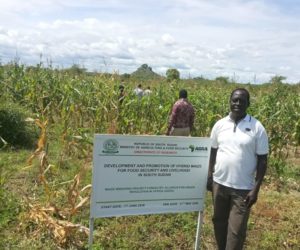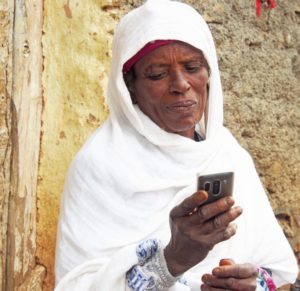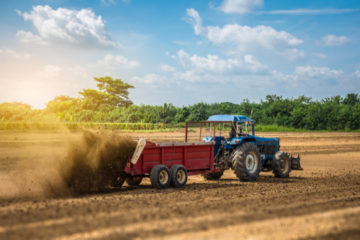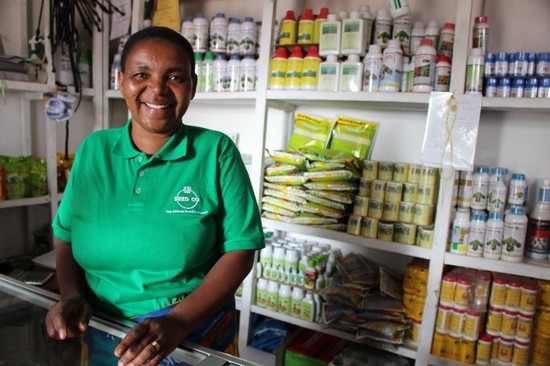Advances in agricultural research have led to numerous improved technologies in plant and animal genetics, crop agronomy, disease and pest management practices, soil fertility enhancement inputs and water management practices that have transformed agriculture globally.
However, these agricultural advances elude much of sub-Saharan Africa not because the technologies do not work, or are non-existent but because they are confined to the shelves of research institutions even as smallholder farmers continue to use traditional technologies that condemn them to low productivity levels and fuel the continent’s cycles of poverty and hunger.
Although African National Agricultural Research Institutes (NARIs), universities, and CGIAR centers have developed numerous improved and locally adapted technologies, the challenge is that the technologies do not reach the hands of smallholders who form the majority farmers in sub-Saharan Africa. Moreover the public extension systems required to inform farmers on the value of improved seed and other crop management practices are poorly facilitated.
Most smallholder farmers live in remote rural areas with poor infrastructure, making input delivery expensive.
The farmers are further limited by their input purchasing capacity, influenced by low and irregular cash flows, lack of access to savings and credit products, and lack of input purchase options.
The approach
Work with companies that source, process, and trade food in the region, to maximize investment, coordination and benefits to smallholder farmers and
Contribute to improve the transparency and predictability of government policies to unlock regional food trade
Initiative Focus & Intervention Areas:
Following initial agro-dealer development pilot initiatives funded by The Rockefeller Foundation, AGRA took the work to scale in sub-Saharan Africa with the objective of creating numerous points of sale in rural areas close to smallholder farmers. This strategy enhances availability, accessibility and affordability of inputs by reducing the distance farmers travel and by increasing farmer awareness through shops within the villages.
Besides the major towns, AGRA’s focus was on developing agro-dealers in smaller towns and villages where they were previously non-existent. AGRA worked with a small number of specialized service providers to identify and train potential agro-dealers, drawn from existing traders willing to diversify into the agro-inputs business, and from interested people, among them lead farmers, retirees, teachers, and extension workers. The basic training comprised business management, product knowledge, and safety in use.
Some seed companies in West Africa have since initiated their own agro-dealer networks in areas where they see the need.
The existence of agro-dealers in farming communities has therefore presented them with an opportunity to serve as a market outlet for smallholder farmers who produce small marketable surpluses.
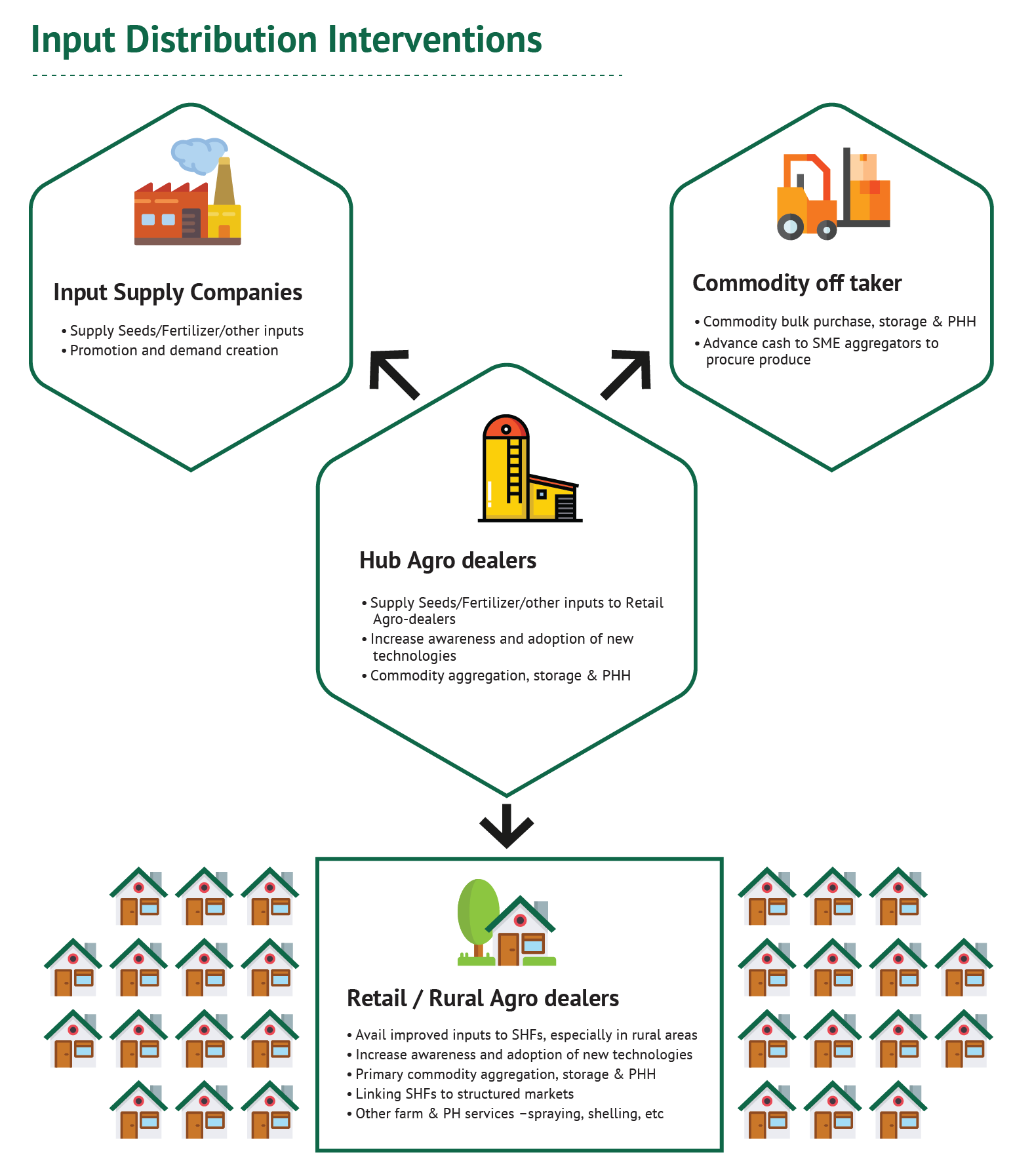
As a result, AGRA believes it is essential to continue to expand the reach of agro-dealers, improve efficiency of their service delivery, and to strengthen the sustainability of their businesses.
To do this, AGRA employs a set of criteria for identifying existing agro-dealers as potential hub agro-dealers. Hub agro-dealers then serve as the main contact points for input suppliers and commodity off-takers, and in turn serve as the source of inputs for more remote, retail agro-dealers.
AGRA works with the hub agro-dealers to expand the network of new retail agro-dealers by encouraging each hub to identify and establish business linkages with 10 to 50 retail agro-dealers, depending on farmer populations and the volume of business. New retail agro-dealers receive basic training in business management and product knowledge.
Our strategy enhances availability, accessibility and affordability of inputs by reducing the distance farmers travel and by increasing farmer awareness through shops within the villages.
Select achievements
Since 2007, AGRA has developed approximately 25,000 agro-dealers in 18 countries, through whom a total of 404,000 MT of seed and over 1.1 million MT of fertilizers had been sold to farmers by 2018. They have greatly enhanced access of smallholder farmers to essential input and output markets needed to increase production. The figure below illustrates the steps AGRA has to develop the capacity of agro-dealers and the next frontier, as outlined in this strategy.





